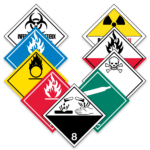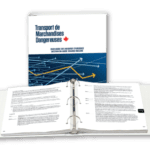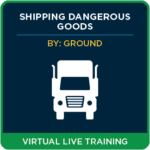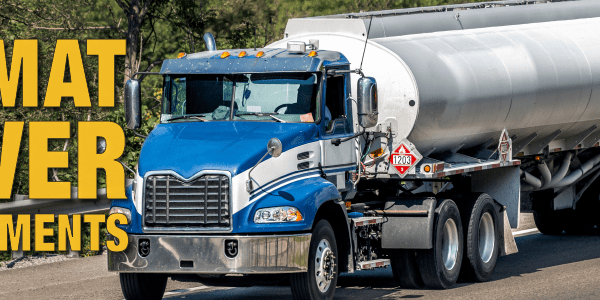Extracting a Solution – A New Description for Hazardous Extracts
If you’ve spent much time in biology class, you may have heard of “lumpers” versus “splitters.” A “lumper” prefers to use one large class to describe a group of organisms with similar but not identical properties, while “splitters” would prefer to break the class up into multiple smaller groups based on each minor difference. (For example, see the current debate over whether the fossil animal called “Nanotyrannus” is a separate species or just a juvenile Tyrannosaurus rex.) The same issue sometimes comes up with regards to classification of hazardous materials in transportation. For example, when it comes to exemptions for small products, the U.S. Department of Transportation (DOT), used to have the concept of “limited quantities” versus “consumer commodities.” These had the same size limits, but one set of rules applied to products used by consumers, while a different set applied to products for industrial use. This turned out to be a waste of effort – the risks of the two types of products were pretty much the same. So eventually the DOT removed “Consumer commodity” as a classification and lumped them in with limited quantities.
The Issue with Extracts
A similar issue has arisen with the shipping descriptions for extracts. First, what is an extract? In chemistry, it’s described as the result of an extraction, the “process of selectively removing a compound of interest from a mixture using a solvent.” For example, let’s say you wanted to collect the aromatic substance “rose oil,” found in rose petals. It can be done on an industrial scale using steam, or you can do it at home using water and olive oil. But the concept is the same – the aromatic chemicals are removed from the mass of the petals by water or oil, and concentrated in a form that has a much more powerful smell and taste.
Extracts are often used in food products for their flavor profiles and appetizing scents, but of course they can also be used for their perfumery and air-freshening properties. Despite being commonly used in many consumer products; they may be classed as dangerous goods (hazardous materials) for the purpose of transportation. The pure chemical extracted may be flammable, or it may be transported in a flammable matrix, such as vanilla extract which is alcohol-based. Remember, just because something is safe to eat or put on your skin doesn’t mean it might not have physical hazards such as flammability, so identifying something as “food grade” doesn’t automatically mean it’s not dangerous for transportation.
So, here’s where the “splitters” came in. Rather than simply classifying extracts as generic flammable liquids, the UN Subcommittee on the Transportation of Dangerous Goods created two shipping descriptions for extracts in the UN Recommendations on the Transportation of Dangerous Goods, Model Regulations. First, we had UN1169, for the shipping name EXTRACTS, AROMATIC, LIQUID. This was intended for extracts used for their scents. A second entry was created, UN1197, for the shipping name EXTRACTS, FLAVOURING, LIQUID. This, obviously, was for extracts like vanilla, which were used primarily for food flavoring. These two shipping descriptions were adopted in regulations based on the UN Recommendations on the Transport of Dangerous Goods, such as the “Hazardous Materials Regulations” (HMR) in the United States and the “Transportation of Dangerous Goods Regulations” in Canada, as well as international regulations such as the ICAO Technical Instructions for the Safe Transport of Dangerous Goods by Air and the International Maritime Dangerous Goods Code (IMDG).
But this “splitter’s approach” brought in some problems. Not only did it create somewhat unwieldy shipping names, but it takes a strictly “either/or” approach to extract, which isn’t always applicable to real world uses. Our example of the extract of rose petals, for example – while it’s more commonly used as a fragrance, it can also be used as a food flavoring. Vanilla extract is the same – it’s used in both foods and as an aromatic extract. So, shippers would have two different shipping descriptions that would be dependent on the end use of the product, which they might not even be aware of.
And, of course, we have to ask, “does this really matter?” It’s hard to imagine emergency responders faced with a spill of flammable extracts really being concerned about whether the end use was as an odorant or as a food additive. The splitters had created a split that really had no valid function.
Therefore, back at the UN, work was done to resolve the issue by taking the “lumper’s” approach and amalgamating the two descriptions. In the UN Recommendations, Revision 22, we see the new description “UN1197, EXTRACTS, LIQUID,” with descriptive text indicating the extracts can be used “for flavor or aroma.” This UN number can be used for either flavoring or aromatic extracts as long as they are classed as flammable liquids in either Packing Group II (if the flash point is less than 23 degrees Celsius) or Packing Group III (if the flash point is between 23 and 60 degrees Celsius.)
Current Situation Regarding Extracts
This change was incorporated into the ICAO Technical Instructions for 2023-2024, the IMDG Code Amendment 41-22, and the 2023 IATA Dangerous Goods Regulations for commercial air transport. As of January 1, 2023, all flavoring and aromatic extracts transported by air should be combined into UN1197, “EXTRACTS, LIQUID.” The IMDG Code allowed for use of the older descriptions until the end of 2023, but they must be changed to the new description as of January 1, 2024.
However, the U.S. “Hazardous Materials Regulations” of Title 49, Code of Federal Regulations (49 CFR) and Canada’s “Transportation of Dangerous Goods Regulations” (TDGR) have not yet been updated to the UN Revision 22 version yet. This leads to a harmonization issue for shippers who transport their extracts by ground under national regulations as well as internationally under ICAO or the IMDG Code. This problem should be resolved as soon as the United States and Canada amend their regulations to harmonize with the 22nd Revision, as planned, but we still face problems until they do.
Fortunately, there are work-arounds that both the U.S. Department of Transportation and Transport Canada have provided to allow shippers to use the new description even before the regulations are amended.
49 CFR and PHMSA
The Pipelines and Hazardous Materials Safety Administration (PHMSA) is currently working on updating 49 CFR to reflect current UN standards, but the amendment has not progressed beyond a Notice of Proposed Rulemaking. As they have done in the past when the updates to 49 CFR lagged, PHMSA has addressed this with a “Notice of Enforcement” that, essentially, means they will treat shippers and carriers as being in compliance with 49 CFR if they use the new rules. This notice states:
“PHMSA and its modal partners will temporarily exercise enforcement discretion against offerors or carriers of hazardous materials packages that are marked, labeled, or transported in accordance with the internationally adopted 2023-2024 Edition of the ICAO Technical Instructions or the Amendment 41-22 of the IMDG Code until otherwise stated.”
Under this notice, therefore, U.S. shippers and carriers are free to use the description “UN1197, EXTRACTS, LIQUID” if they wish, although it is still acceptable to use the older versions, since they are still in the text of 49 CFR.
TDGR and Transport Canada
In Canada’s TDGR, it’s even easier to use the updated shipping description, since Transport Canada built a workaround directly into the regulations. In section 2.2(4) of the TDGR it states:
“A consignor may use the appropriate classification in the ICAO Technical Instructions, the IMDG Code or the UN Recommendations to transport dangerous goods within Canada by a road vehicle, a railway vehicle or a vessel on a domestic voyage if these Regulations or the document from which the classification is taken does not forbid their transport.”
Note that Transport Canada uses the word “classification” to refer to the full shipping description (UN number, shipping name, class and packing group), not just the hazard class.
So, without having to create any special enforcement arrangements, shippers and carriers in Canada are free to use the description from the 22nd UN revision even though it has not yet been incorporated into the TDGR.
Conclusions
So, what should a shipper of extracts do? If your shipment is by ground within Canada or the U.S., you don’t have to change anything. You can keep on using the older descriptions that separate flavoring extracts from aromatic ones. But if your operation goes outside those two countries, or you ship by air or ocean, it will be much more convenient to switch now to using the simplified description “UN1197, EXTRACTS, LIQUID.” This is now required by the IMDG Code, ICAO, and IATA, and is permitted by the DOT and Transport Canada. You won’t have to worry about two different sets of descriptions based on mode of transport. And when the DOT and Transport Canada update their regulations, you’ll be already in compliance.
Questions?
Dealing with harmonization issues between different regulations can be a headache, but we can help! ICC Compliance Center has a team of full-time Regulatory Experts who have years of experience and are certified/recognized in their field of expertise. Ask us your tough questions by calling 888.442.9628 (USA) or 888.977.4834 (Canada) or send us an email.
Stay up to date and sign up for our newsletter!
We have all the products, services and training you need to ensure your staff is properly trained and informed.
 Hazard Class Labels Hazard Class Labels |
Sources:
Harper College Chemistry Department, “Extraction and Washing”
Wikipedia, “Rose Oil”
HGTV, “How to Make Rose Oil and Rose Water”
Perfumer and Flavourist, “Extracts: A Classic Approach to Modern Needs”
Transport Canada, “Transportation of Dangerous Goods Regulations”
U.S. Department of Transportation, “Hazardous Materials Regulations,” Title 49 of the Code of Federal Regulations
United Nations, UN Recommendations on the Transportation of Dangerous Goods, Model Regulations, 22nd Revision


 TDG Publications
TDG Publications




